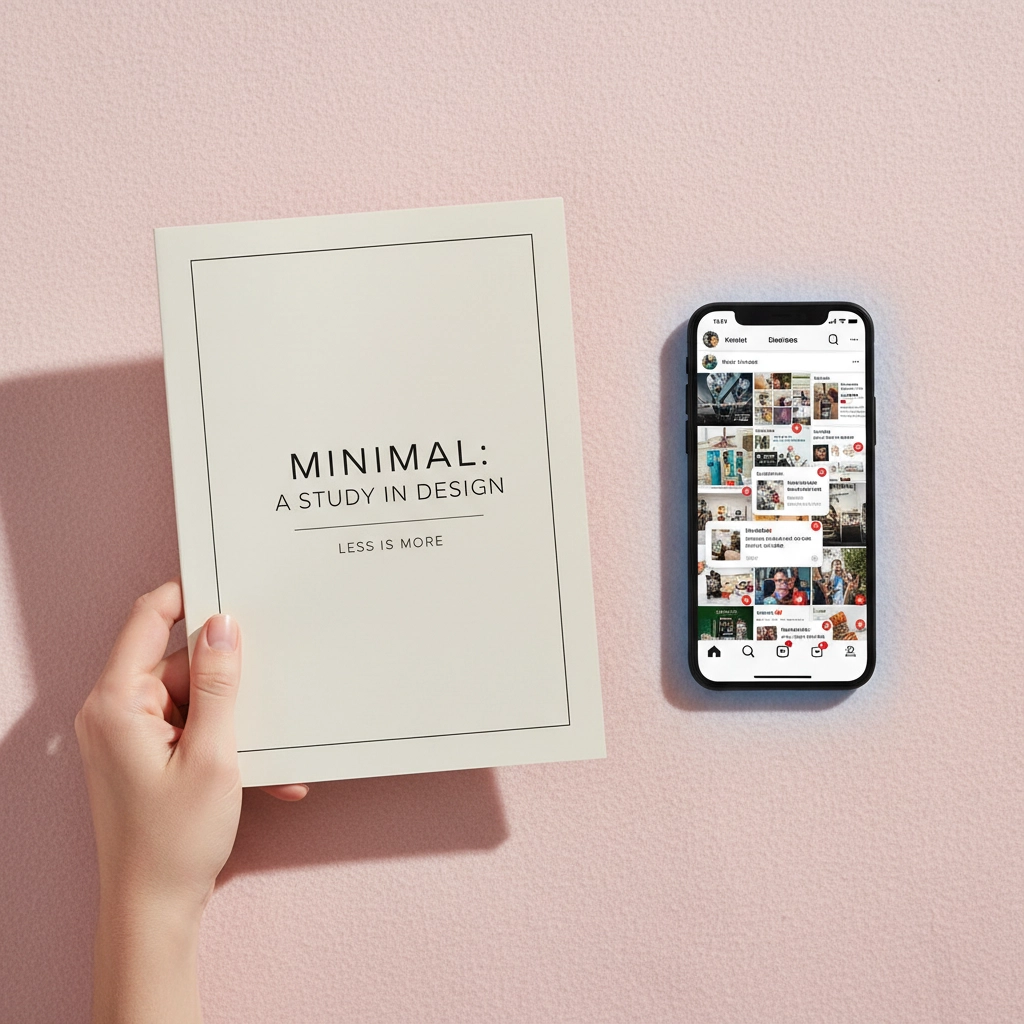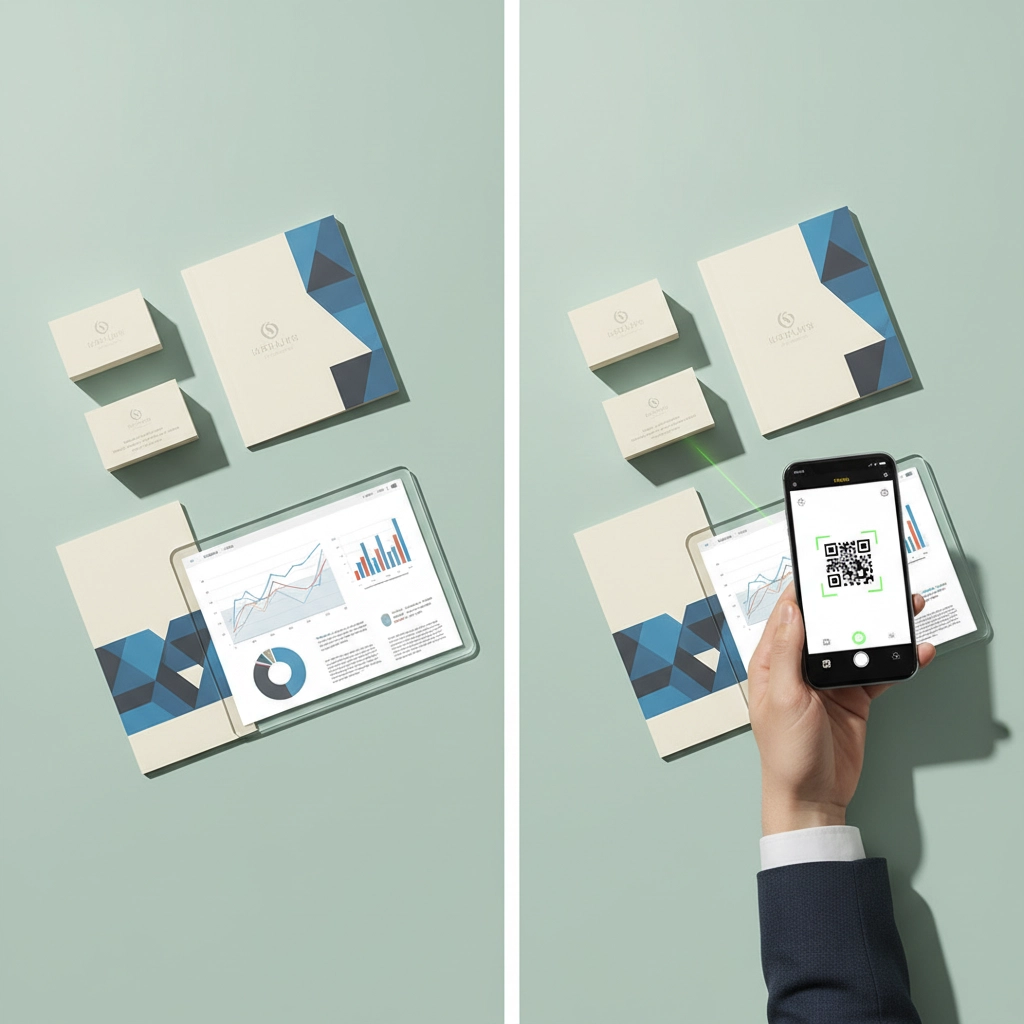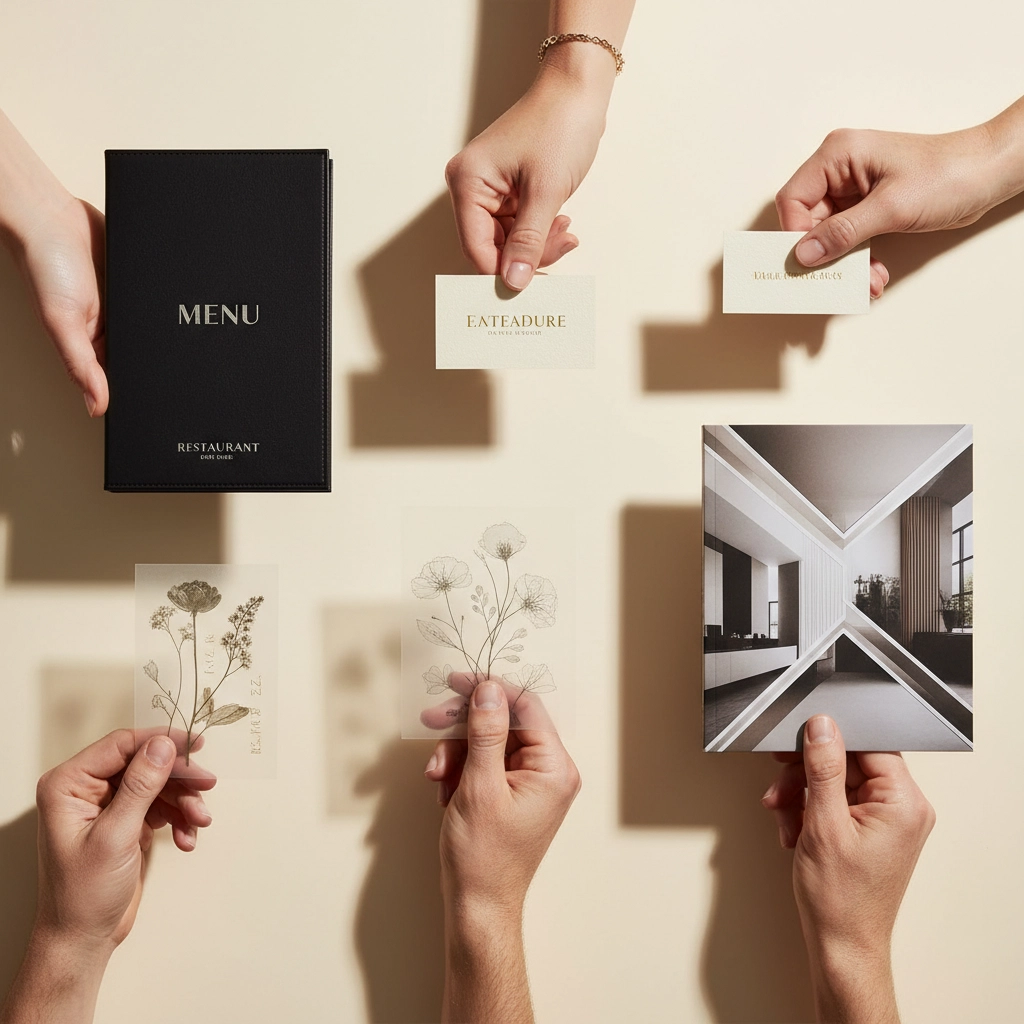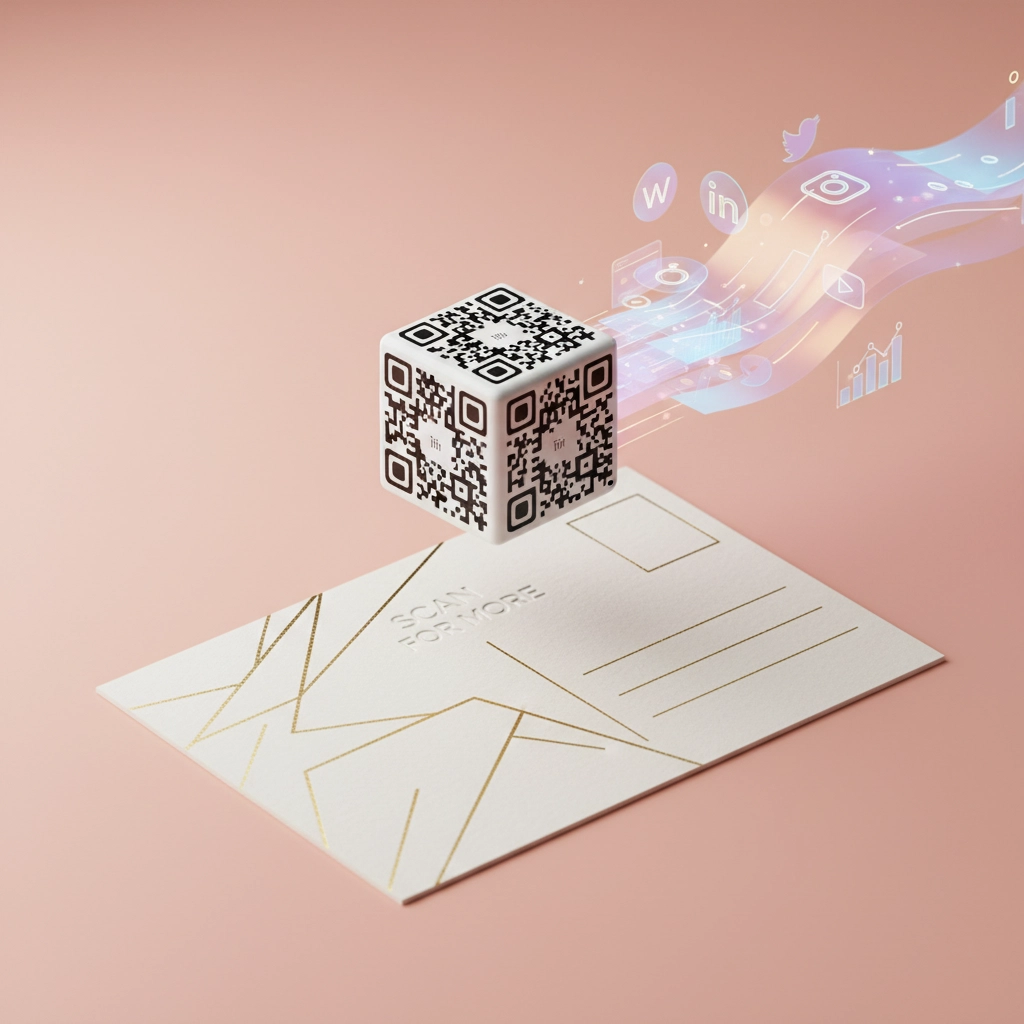Is Print Really Dead? Why Print Marketing Still Matters in a Digital World
- Karen Kinnersly
- Oct 14
- 7 min read
Let's get one thing straight: print isn't dead. Sure, we've all heard the funeral bells ringing for newspapers, magazines, and those glossy brochures that used to fill our letterboxes. But here's the plot twist: while everyone was busy declaring print's demise, something interesting happened. Print marketing quietly evolved, adapted, and found its sweet spot in our hyper-digital world.
Think about it. When was the last time you received a beautifully designed piece of print marketing that made you actually stop and take notice? Probably more recently than you think. That's because smart Australian businesses are realising something crucial: in a world drowning in digital noise, print cuts through the clutter like a well-designed business card at a networking event.
The Trust Factor: Why Print Still Packs a Punch
Here's a statistic that might surprise you: 82% of internet users trust print ads more than any other medium when making purchasing decisions. Let that sink in for a moment. In an age where we're bombarded with pop-ups, banner ads, and sponsored posts, people still find print more trustworthy than digital alternatives.
Why? It's simple psychology, really. There's something about the physical act of holding a brochure, flipping through a catalogue, or examining a business card that creates a different level of engagement. It's tangible, it's real, and it can't be blocked by an ad-blocker (take that, digital marketing!).

Consider this: when you receive a well-designed direct mail piece from a local Melbourne restaurant featuring their new winter menu, you're likely to keep it on your kitchen counter for days, maybe even weeks. That same restaurant's Facebook ad? It's gone with a single scroll, lost in the endless feed of cat videos and political rants.
The Memory Game: Print's Secret Weapon
Remember everything you read online yesterday? Probably not. But that vintage-style poster you spotted at your local café advertising their jazz nights? That's likely still floating around in your memory bank. Research shows print marketing has a 70-80% higher recall rate than digital advertising.
This isn't just marketing fluff: it's cognitive science. Our brains process physical text differently than digital text. When we read print, we create a mental map of the information, anchoring it to the physical experience of turning pages or holding the material. Digital content, on the other hand, tends to float in our minds without these physical anchors.
Print vs Digital: The Ultimate Showdown (Or Is It?)
Let's break this down like we're comparing two heavyweight champions, except neither one actually needs to knock the other out:
Print Marketing Strengths:
Longevity: That beautifully designed property brochure from a Sydney real estate agent doesn't disappear after 30 seconds
Credibility: People perceive print as more legitimate and established
Focused attention: No competing tabs, notifications, or distractions
Sensory engagement: The texture, weight, and even smell create memorable experiences
Targeted distribution: You can literally put your message exactly where you want it
Digital Marketing Strengths:
Speed: Launch campaigns instantly
Analytics: Track everything down to individual clicks
Cost-effectiveness: Lower production costs for mass distribution
Interactivity: Videos, animations, and clickable elements
Global reach: Connect with audiences worldwide instantly

But here's where it gets interesting: the real magic happens when you stop thinking of this as an either-or situation. The most successful Australian businesses aren't choosing sides; they're playing chess while everyone else is playing checkers.
The Power Couple: When Print and Digital Join Forces
Remember when everyone thought smartphones would kill cameras? Instead, they just made everyone a photographer. The same principle applies to print and digital marketing: they're better together.
Campaigns that combine print and digital advertising are 400% more effective than online-only campaigns. That's not a typo: four hundred percent. When a Brisbane accounting firm sends out a printed newsletter with QR codes linking to their tax planning videos, they're creating multiple touchpoints that reinforce their message across different channels.
Here's how forward-thinking Australian businesses are making this work:
QR Codes: The Bridge Between Worlds That sleek restaurant menu with a QR code linking to wine pairings and chef specials? It's giving diners the tactile experience of print while providing the dynamic content of digital.
Integrated Campaigns A Gold Coast tourism operator might send beautifully printed postcards to Melbourne travel agencies, with each postcard featuring a unique discount code that can only be redeemed online. Print drives awareness, digital tracks conversion.

Follow-Up Sequences Print gets attention, digital maintains the relationship. A Sydney gym might use eye-catching flyers for their grand opening, then follow up with targeted social media ads to everyone who visited their website after scanning the flyer's QR code.
Real Talk: Where Print Still Rules
Let's be honest about where print marketing absolutely shines in the Australian market:
Local Businesses: Your neighbourhood café, the local plumber, the corner bookstore: these businesses thrive on community connection, and print helps build that tangible relationship with their audience.
High-Value Services: Law firms, financial advisors, luxury real estate agents: when you're making big decisions, people want something substantial they can review at their own pace.
Event Marketing: Nothing says "save the date" quite like a beautifully designed invitation that sits on someone's fridge for weeks.
B2B Relationships: In professional services, a well-designed capabilities brochure or annual report still carries weight (literally and figuratively) in boardroom discussions.
Magazines Mean Business: The Quiet Power of Print Ads
Let’s talk mags. If print is the slow food of marketing, magazines are the long lunch: curated, considered, and enjoyed without the frantic scroll. When your brand appears inside a title people actively choose to read, you’re borrowing some of that trust and taking up real, focused attention.
Why magazine ads feel more credible
Editorial halo: Readers trust the masthead, and your ad benefits from that credibility. It’s the difference between a random pop-up and being invited to the table.
Intentional attention: People sit with magazines (coffee in hand, phone face down… ideally). That slower pace means more time with your message.
Tactile quality: Beautiful print stock and strong art direction signal quality. The medium elevates the message.
Targeting: right message, right niche
Niche and trade titles: From Australian Mining and Inside Retail to Fishing World and Australian Geographic, you can speak directly to passionate, engaged communities.
Lifestyle and fashion: Think Vogue Australia, Country Style, frankie, Peppermint—great for values-led brands and design-forward products.
Travel and premium: Qantas magazine and Australian Traveller reach high-intent audiences planning their next move (and their next splurge).
Grocery and everyday: Coles Magazine and Woolworths’ Fresh sit in millions of kitchens—perfect for recipe-led, “add to list” behaviour.
Real-world examples (the Aussie edition)
FMCG with recipes: A new sauce launches via a full-page in Coles Magazine alongside a recipe call-out and a QR code to a shopping list. Simple, shoppable, and very fridge-door friendly.
Property with polish: A boutique developer runs a double-page spread in AFR Magazine to reach time-poor, high-net-worth readers considering their next investment.
Tourism with itineraries: A state tourism body uses a Qantas magazine spread to showcase a 3-day getaway, linking via QR to bookable itineraries.
Ethical fashion with values: A sustainable label features in Peppermint with creative that mirrors the mag’s tone—minimal fuss, maximum alignment.
How to make your magazine ad stand out
Pick your placement: Right-hand pages, inside front/back covers, and adjacency to relevant editorial can lift attention. Ask for options.
Say one thing well: A sharp headline, striking visual, and a single action. If readers remember only one idea, what should it be?
Match the mag’s aesthetic: Design that feels native to the title earns a second look. Typography, colour, and photography should “belong” on the page.
Make it measurable: Use a short vanity URL, unique QR code, or offer code. Ensure the landing page mirrors the creative (and loads fast on mobile).
Think in series, not one-offs: Repetition across issues builds recognition and recall.
Ask for value-adds: Publishers often bundle native content, sampling, tip-ons, or social extensions—great for stretching your spend.
Bottom line? Magazine advertising works best when the creative is clear, the placement is strategic, and the path to action is effortless. If you want staying power—not just passing impressions—mags deliver.
The Sustainability Question
Before you start worrying about trees, let's address the elephant in the room. Modern print marketing isn't about wasteful mass distribution: it's about strategic, targeted communication.
Smart Australian businesses are using:
Recycled and sustainable paper stocks
Digital printing for smaller, more targeted runs
Strategic distribution rather than blanket coverage
Integration with digital to reduce overall print volumes
The goal isn't to print more: it's to print smarter.

Making It Work for Your Australian Business
So how do you bring print back into your marketing mix without looking like you're stuck in 2005? Here's your game plan:
Start Small and Test: Don't dive headfirst into a massive print campaign. Try a small, targeted direct mail piece or beautifully designed business cards with QR codes linking to your digital portfolio.
Quality Over Quantity: One exceptionally designed piece will outperform a hundred mediocre ones. Invest in good design, quality paper, and thoughtful messaging.
Integrate Everything: Make sure your print materials work seamlessly with your digital presence. Use consistent branding, matching colour schemes, and complementary messaging.
Track and Measure: Use unique URLs, QR codes, or discount codes to track how your print materials drive digital engagement.
The Future is Hybrid
Here's the thing about the future of marketing: it's not about choosing between print and digital. It's about understanding that different audiences respond to different touchpoints, and the most effective marketing strategies acknowledge this reality.
Your customers aren't living in purely digital or purely physical worlds. They're living in a blended reality where they might discover your business through a beautifully designed flyer, research you online, visit your physical location, and then share their experience on social media.

The businesses that thrive are the ones that meet their customers wherever they are, with whatever medium works best for that particular moment in their journey.
Ready to Bring Print Back?
The death of print marketing has been greatly exaggerated. While digital channels continue to evolve and dominate certain aspects of marketing, print offers something irreplaceable: a tangible, trustworthy, and memorable way to connect with your audience.
At Locale Creative, we understand that great marketing isn't about following trends: it's about finding the right mix of channels that work for your unique business and audience. Whether you need stunning print materials that perfectly complement your digital presence or want to explore how QR codes and modern print techniques can bridge your physical and digital marketing efforts, we're here to help you create campaigns that actually work.
Ready to discover how print can elevate your marketing game? Let's chat about bringing some tangible magic back to your brand strategy. Because in a world of endless scrolling, sometimes the best way to stand out is to give people something they can actually hold onto.
Visit our services page to see how we can help you create marketing materials that bridge the best of both worlds: or check out our work to see print and digital integration in action.




Comments